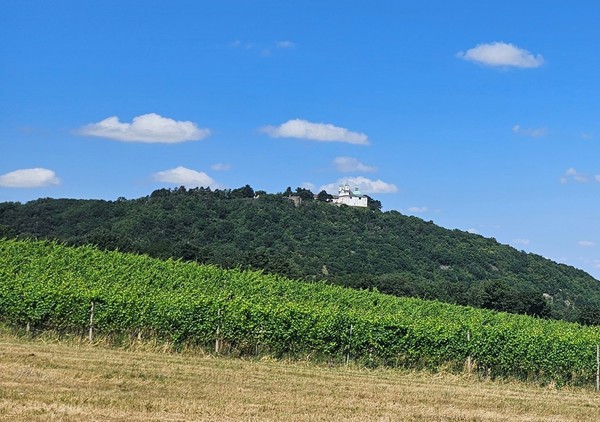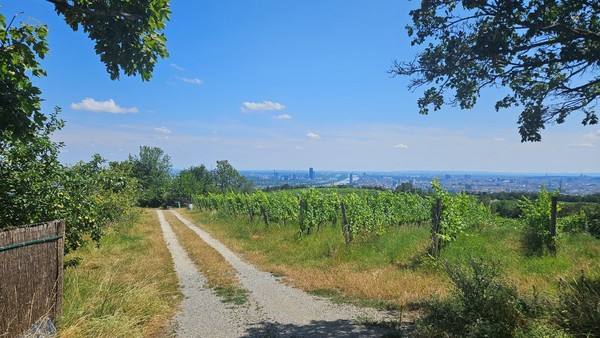The Kahlenberg the Namsan of Vienna

[아츠앤컬쳐] 칼렌베르크는 유명한 비엔나 숲의 언덕으로, 현지인과 관광객 모두에게 인기 있는 명소다. 이곳의 역사는 깊고 다양하며, 비엔나의 멋진 전경을 감상할 수 있을 뿐만 아니라 또한 역사상 가장 위대한 작곡가들에게 영감과 휴식을 제공한 장소이기도 하다. 칼렌베르크는 중세 시절부터 목초지와 포도밭으로 사용되어 왔으며, 그 첫 번째 문서화된 언급은 1133년으로 거슬러 올라간다.
1683년, 터키군의 제2차 빈 공방전 당시, 칼렌베르크는 결정적인 역할을 했다. 폴란드의 왕 얀 3세 소비에스키는 칼렌베르크를 출발점으로 하여 오스만 제국 군대에 대한 결정적인 공격을 감행하여 비엔나를 해방시켰다. 현재 이곳에 17세기에 지어진 성 요셉 순례 교회가 자리하여 순례자들에게 인기 있는 장소로 비엔나와 그 주변 지역의 멋진 전망도 볼 수 있다. 이 지역에는 방문객들을 끌어들이는 수많은 하이킹 코스, 레스토랑, 카페, 그리고 전통 와인 선술집 호이리게가 있다.

호이리게는 신선한 빈티지 와인을 제공하는 전통 오스트리아식 레스토랑이다. ‘호이리게’라는 용어는 ‘올해의’라는 뜻을 가진 ‘호이리크’에서 유래한다. 호이리게의 역사와 문화에 대한 몇 가지 흥미로운 사실이 있다. 호이리게의 전통은 1784년으로 거슬러 올라가며, 당시 황제 요제프 2세는 와인 생산업자들이 자신들의 와인을 직접 손님들에게 판매할 수 있도록 허용했다. 호이리게는 아늑하고 소박한 분위기로 유명한데, 오래된 와인 저장고나 가든 레스토랑에 위치한 경우가 많으며, 와인과 지역 특산품을 즐길 수 있는 편안한 환경을 제공한다. 와인 외에도 호이리게에서는 햄, 치즈, 스프레드, 신선한 빵 등이 포함된 냉요리나 로스트 포크, 슈니첼과 같은 오스트리아 전통 요리를 제공한다.
많은 호이리게에서는 전통적인 비엔나 슈람멜과 같은 라이브 음악을 제공하며, 이는 아늑한 분위기를 더욱 돋운다. 이 특별한 분위기는 루트비히 반 베토벤, 프란츠 슈베르트, 요한 슈트라우스와 같은 유명한 작곡가들에게 영감을 주었는데, 그들은 종종 포도원길을 거닐며, 위대한 작품을 남겼다.

루트비히 반 베토벤은 영감을 얻기 위해 평화로운 비엔나 교외와 시골에서 많은 시간을 보냈다. 그는 오랜 기간 칼렌베르크 언덕 누스도르프의 여러 아파트에 거주했으며, 당시 자신들의 와인을 제공했던 소박한 호이리게를 자주 찾았다. 지금도 이러한 방식으로 포도밭에서 직접 와인을 즐길 수 있다. 베토벤은 도시의 번잡함에서 벗어나 종종 비엔나 숲과 칼렌베르크에서 산책을 하며 새로운 작곡 아이디어를 얻었다.
프란츠 슈베르트 역시 자연과 비엔나 주변을 사랑했던 인물이다. 그는 소위 ‘슈베르티아데’라고 불리는 친구들과 함께 자주 하이킹을 하며 풍경을 탐험하고 음악을 만들었다. 왈츠의 왕 요한 슈트라우스도 비엔나의 시골과 호이리게를 사랑한 것으로 유명하다. 칼렌베르크와 주변 포도밭은 슈트라우스와 그의 동시대인들이 자연을 즐기고 음악에 대한 영감을 얻는 데 인기 있는 장소였다.

또한, 칼렌베르크에는 작은 묘지인 보석 같은 장소들이 있는데, 한국의 전통적인 자연 한가운데에 있는 무덤과 비슷한 형태다.

The Kahlenberg the Namsan of Vienna
The Kahlenberg is a prominent hill in the Vienna Woods and a popular destination for Viennese and tourists. Its history is rich and varied, it not only offers a breathtaking view of Vienna, but was also a place of inspiration and recreation for some of the greatest composers in the history of music, already used as a pasture and wine-growing area in the Middle Ages. The first documented mention of the Kahlenberg dates back to 1133.
In 1683, during the Second Turkish Siege of Vienna, the Kahlenberg played a decisive role. The Polish King Jan III Sobieski used the Kahlenberg as a starting point for the decisive attack on the Ottoman troops that led to the liberation of Vienna. Now the pilgrimage church of St. Joseph, which was built in the 17th century, stands there. It is a popular place for pilgrims and offers a magnificent view over Vienna and the surrounding areas. There are numerous hiking trails, restaurants, cafes and of course the wine taverns called Heuriger that attract visitors.

A Heuriger is a traditional Austrian restaurant in which the young wine of the current vintage is served. The term "Heuriger" is derived from the word "heurig", which means "this year". Here are some interesting facts about the history and culture of the Heurigen: The tradition of Heurigen dates back to 1784, when Emperor Joseph II allowed winegrowers to sell their own wine directly to guests. Heurigen are known for their cozy and rustic atmosphere. They are often located in old wine cellars or garden restaurants and offer a relaxed environment where you can enjoy the wine and regional specialties. In addition to wine, Heuriger also offer a selection of traditional Austrian dishes, such as cold platters with ham, cheese, spreads and fresh bread. Hot dishes such as roast pork and schnitzel are also often on offer.
Many wine taverns also offer live music, often in the form of traditional Viennese Schrammel music, which contributes to the cozy atmosphere. Due to this special atmosphere, it has inspired famous composers of the city, such as Ludwig van Beethoven, Franz Schubert and Johann Strauss, who very often walked the paths in this wine-growing region and resulted in fantastic feats.

Ludwig van Beethoven spent a lot of time in the Viennese suburbs and in the countryside to find peace and inspiration. For a long time he lived in various apartments at the foot of the Kahlenberg in Nussdorf and was often at the Heurigen, at that time still very simple with the serving of his own wine. In the meantime, this simple way is available again, directly in the vineyards. It is believed that he often took walks in the Viennese woods and on the Kahlenberg. These excursions helped him to recover from the hustle and bustle of the city and to develop new ideas for his compositions.
Franz Schubert was also a great lover of nature and the Viennese surroundings. He often went on hikes with friends, the so-called "Schubertiades", where they explored the landscape and made music. Johann Strauss, the Waltz King, was known for his love of the Viennese countryside and the Heurigen. The Kahlenberg and the surrounding vineyards were popular places for Strauss and his contemporaries to enjoy nature and find inspiration for their music. But there are also gems to be found on the Kahlenberg, such as the Kahlenberg Cemetery, tiny graves similar to those in Korea in the middle of nature.

글 | 볼프강 슬라빈스키 Wolfgang Slawinski
서울명예시민
한·오스트리아협회 회장

